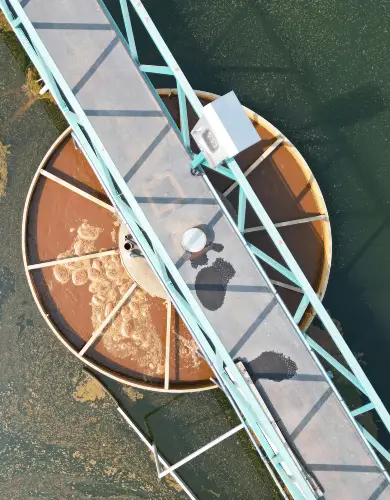Rising Block Tariffs | The first smart water tariff
The rollout of smart water meters across the British water network is underway, opening up the possibility of smart water tariffs that actively encourage responsible water usage.
The rising block tariff for water supplies is the first example of the water industry adopting smart tariffs. Limited trials of rising block tariffs are currently being conducted to determine whether they encourage more efficient water usage.
This article explains how the rising block tariff works, the behaviour it incentivises, its potential future rollout, and the implications for businesses.
What is a rising block tariff?
A rising block water tariff uses a structure where the cost of water increases as consumption rises.
The system is divided into tiers or “blocks,” each representing a range of annual water usage.
The first block covers basic water needs at a lower rate, while subsequent blocks charge higher rates as water consumption increases.
The aim of the rising block tariff is to incentivise households to eliminate unnecessary water consumption through measures such as:
- Using a water butt to harvest rainwater for the garden.
- Fixing minor water leaks, such as those in toilet cisterns.
- Reducing the duration of showers and baths.
How a rising block tariff works
To demonstrate how a rising block tariff works, below are the rising block trial tariff rates currently being paid by 1,500 Affinity Water customers:
- Fixed annual standing charge – £12
- First 30 cubic metres – Free
- Between 30 and 215 cubic metres – £1.5125/cubic metre
- Consumption exceeding 245 cubic metres – £4/cubic metre
💡The average water consumption of a UK home is 130 cubic metres annually.
Source: Affinity Water charging scheme – 2024/25
The purpose of a rising block tariff
A rising block tariff aims to incentivise the reduction of unnecessary water consumption.
To illustrate this incentive, below we compare the rising block tariff to the incentives of other water tariffs currently used in the British water industry:
Rateable value tariff
- Situation: Used for homes and businesses without a water meter.
- Water rates: Your annual water bill is the same regardless of how much water you use.
- Incentive: No incentive to save water.
Volumetric tariff
- Situation: Used for homes and businesses with a water meter.
- Water rates: You are charged for each cubic metre of water consumed at your property.
- Incentive: Some financial incentive to reduce water consumption.
💡Use our water meter calculator to see if you can benefit from upgrading to a volumetric tariff.
Rising block tariff
- Situation: Homes with a smart water meter and are part of the initial rising block tariff trials.
- Water rates: You are progressively charged more for each cubic metre of water consumed
- Incentive: Strong financial incentive to reduce your water footprint.
Rising block water tariffs for businesses
Water tariffs for commercial properties that use large volumes of water typically follow a falling block tariff, which is the opposite of a rising block tariff.
Industries that consume the most water receive a significant discount compared with small business water users.
Taking the example of businesses in the Thames Water area, the wholesale business water rates for the 2024/25 charging year are:
| Annual consumption (cubic meters) | Tariff names | Volumetric charge (£/cubic meter) |
|---|---|---|
| 0 – 20,000 | NHHMPW1/2/3/4 | £1.9145 |
| 20,000 - 50,000 | NHHMPW5 | £1.7518 |
| 50,000 - 250,000 | NHHMPW6 | £1.4359 |
| Over 250,000 | NHHMPW7 | £1.1487 |
Source: Thames Water Scheme of Charges
Applying a rising block tariff to businesses would make specific industries, such as agriculture and food production, more expensive, which would be counterproductive to the UK’s food security strategy.
However, it is clear that the falling block tariffs used for business water bills do not incentivise water efficiency.
The Strategic Panel (formed of water wholesalers, business water suppliers, and MOSL) recently published its Roadmap for a Flourishing Market, which promotes the following alternative smart tariffs for business water consumption.
Seasonal tariffs
A seasonal water tariff could charge more for water during the summer when water scarcity is more of an issue.
Interruptable tariffs
A cheaper tariff where a water supplier is allowed to disconnect a water supply in the event of a drought to help manage the availability of water across their network.
Sustainable water tariffs
Although not strictly a smart tariff, some green business water suppliers offer sustainable water tariffs that offset the environmental effects of the water industry using carbon credits.
At AquaSwitch, we’ve helped thousands of companies compare business water rates and switch to a sustainable water tariff.
Are rising block water tariffs likely to be used widely?
Rising block tariffs are currently in initial trials, and it’s unclear whether they will have the intended effect on water efficiency.
A particular problem is that the currently used rising block tariffs don’t distinguish between the number of occupants in a household. A person living alone will naturally use less water than a full family home.
The key determinant of success will be whether the trials result in a measurable reduction in water consumption by participants, which will become clear over the next few years.

